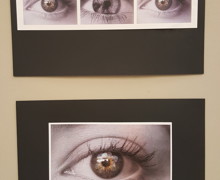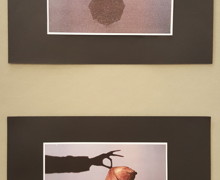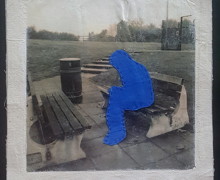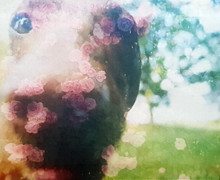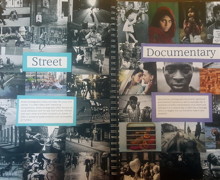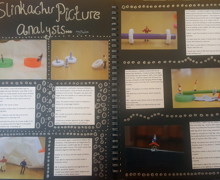- Home
- Secondary
- Subject Information
Photography
BackIntroduction
Why take GCSE Photography?
Students will be given the opportunity to:
- Take photographs using a digital SLR camera;
- Find out how to use photographic equipment;
- Find out about photography related careers like advertising, graphic design, and scientific photography;
- Find out how to change and improve photographs using digital manipulation software such as Photoshop.
The emphasis will be placed on the student to be independent and take responsibility for their learning and creative practice. This, coupled with the practical and theoretical skills they will gain during the course, will provide students with a solid base for any future pathway within photography.
In year 10 students will be introduced to the Rules of Composition and the powerful effect that elements such as symmetry, rule of thirds, leading lines and space can have on creating a successfully composed photograph. The thought provoking and often humorous photographer Slinkachu will be studied with outcomes produced which demonstrate an understanding of how to use aperture and shutter speed effectively, whilst delving in to the creation of stop-motion animation and flip-books. Students will also connect their work to street, documentary and composite photography.
The second project will involve experimentation within a darkroom setting to produce outcomes inspired by Op Art (optical illusions), and the use of rayograph techniques in the style of Man Ray. Portraiture will follow as a third project, experimenting with a variety of approaches to, and styles of, portrait photography, leading to the development of creative ideas for a magazine cover incorporating a striking portrait image.
In year 11 students will further develop their dark room knowledge and skills with a mixed media focus. Images will be altered and manipulated both digitally and manually using a variety of techniques including painting, tearing, layering and stitching.
The externally set examination will begin in the Spring term of year 11.
What is the course about?
You will work in one or more areas of lens–based & light based media such as:
- Portraiture;
- Landscape – working from built on natural environments;
- Documentary photography, photo journalism;
- Fine art;
- Computer manipulated photography.
Photography is more than pointing a camera and pressing the button. You will need to be prepared to learn skills and techniques about what makes a good photograph and how to take it. You will be expected to demonstrate:
- Your ability to explore formal elements of visual language in your photography;
- A response to an issue, theme or design brief (given by your teacher and exam board);
- Use of viewpoints, compositions, focus control, depth of field, movement and narrative;
- An understanding of developing, printing and manipulating.
You will also have to display knowledge and understanding of:
- How ideas, feelings and meanings are conveyed and interpreted, plus, how these in turn relate to social, historical, vocational and cultural situations;
- A variety of approaches and methods used by photographers, both historical and contemporary.
You will produce a body of work for the theme in the form of sketches of planned shots, contacts sheets, exploration and development of your ideas, independent research and photographic/artist studies. This will be presented in the form of a sketchbook and final outcomes (photographs, montage, film, etc) relevant to your ideas and research.
How is it assessed/examined?
Unit 1: Personal Portfolio (Coursework unit) – 60% of the final grade.
Students’ work will be internally assessed by teachers in the Photography department. A sample will then be selected by the exam board which will be assessed by an external moderator.
Unit 2: Externally set Assignment (Controlled test) – 40% of the final grade.
The theme of this unit is set by the exam board. Students have a minimum of 20 hours preparation time followed by an unaided 10 hour exam on a final piece. This follows a similar format to coursework but over a considerably shorter time.
In both cases your work will be assessed against four assessment objectives as follows:
- Assessment Objective 1: Develop ideas through investigations, demonstrating critical understanding of sources.
- Assessment Objective 2: Refine work by exploring ideas, selecting and experimenting with appropriate media, materials, techniques and processes.
- Assessment Objective 3: Record ideas, observations and insights relevant to intentions as work progresses.
- Assessment Objective 4: Present a personal and meaningful response that realises intentions and demonstrates understanding of visual language.
Students’ work will be internally assessed by teachers in the Photography department. A sample will then be selected by the exam board which will be assessed by an external moderator.
What can I do once I have completed the course?
You may wish to go on to study an AS or A-Level in Photography or BTEC Art qualification. Following on from this you could complete an Art Foundation course before embarking on a university degree.
Photography is used in a variety of different professions where good visual communication is vital. Newspapers, magazines, film, television, books and the internet use photography as do industry, medicine, business and research.
“Which of my photographs is my favourite? The one I’m going to take tomorrow.” – Imogen Cunningham

